Lockheed L-414 Hudson
Background
The Hudson was a conversion of the type 14 Super Electra transport built to the order of the British Government, and later supplied to Commonwealth and other services. The family developed from the Electra, through the Hudson, Lodestar, and Ventura, to the Harpoon. First flown in 1937, the Super Electra was a popular purchase with the airlines, and Howard Hughes flew one round the world in 1938. The Hudson production eventually reached 2941 aircraft in six marks and eight versions.
The RNZAF operated 94 of the aircraft (NZ2001-2094) between 1941 and 1948 (NZ2007-2036 Mk.III, NZ2037-2090 IIIa, NZ2001-2006 Mk.V, and NZ2091-2094 Mk.VI). All the aircraft were diverted from RAF contracts, and initially had RAF serials. The aircraft were issued to No.s 1-4SQNs, 9SQN, and No1 OTU. The aircraft were used in patrol and bombing roles, serving overseas in the Pacific based at New Caledonia and in the Solomons. Fourteen of the aircraft were converted to C-63 standard during 1943 and 1944. 42 aircraft were lost in service. Post-war the aircraft were used by 40 and 41 SQNs and the Utility flight for transport, navigation training, air-sea rescue, and photography. One aircraft (NZ2079 / ZK-AHY) was loaned to Union airways as a trainer in 1945-46 before being returned to the Airforce. The bulk of the aircraft were scrapped in 1949, with the final five aircraft disposed in 1951.
Five RNZAF Hudsons survive:
- NZ2013 (c/n 3826, ex V9241) a Hudson III (illustrated below) has been restored and is held by the RNZAF museum. This aircraft was taken on charge in September 1941. The aircraft was acquired by James Clark in May 1949 from Taieri, and the fuselage was used as a chicken shed. In 1984, No26 SQN ATC worked with the RNZAF museum to acquire the aircraft, which was then recovered from a farm near Oamaru. Restoration work began in 1987. Wings were acquired from Holdaways in Blenheim (where they had been used as a shed roof), and parts of the tail structure were recovered from Lodestar ZK-AKX/NZ3508 (which had crashed in the Tararua ranges on March 18, 1949). The restored aircraft was rolled out on July 17, 1996, painted in the colours of No4 GR aircraft YZ-R based in Fiji in mid-1943.
- NZ2031 (c/n 3854, ex AE499) a Hudson III (illustrated below) is nearly complete and stored at MoTaT. The aircraft which had been taken on charge in October 1941 was sold at the same time as '13'. Restored by Barrie East, the aircraft is currently in storage, with the wings removed.
- NZ2035 (c/n 3858, ex AE503) a Hudson III (illustrated below) is held under restoration by the Ferrymead Aeronautical society. The aircraft which had been taken on charge in October 1941 was sold from Woodbourne in May 1949 to Mr L.Edwards. Like many other restoration projects, this aircraft was salvaged from a farm.
- NZ2049 (c/n 6465, ex 41-36976, FH175) a Hudson IIIa is in store at Mapua. This aircraft was one of the first sold from Woodbourne by tender to Mr Edwards in November 1947. John Smith acquired '49' before it could be broken up.
- NZ2084 (c/n 6725, ex 41-37236, FH435) a Hudson IIIa fuselage only. Held by the RNZAF Museum, the fuselage is on display in the Aviator's Gallery in Christchurch. The aircraft was disposed of from Rukuhia to Mr Larsen in May 1948.
A further fuselage section (identity unknown) is held by the RNZAF at Ohakea (illustrated below).
Last Update:- 16 April, 1999
Technical Data
Data is for the Hudson III
- Accommodation : 5
- Dimensions
- Span : 19.95m (65'6ft)
- Length : 13.4m (44'4ft)
- Height : 3.63m (11'11ft)
- Weight
- empty : 5,690kg (12,536lb)
- max : 8,400kg (18,500lb)
- Power Plant : 2x 1200hp Wright Cyclone GR-1820-G205A
- Performance :
- max speed : 440km/h (275mph)
- max climb : ft/min (m/min)
- ceiling : 26,500ft (8077m)
- range : 3456km (2160miles)
Images
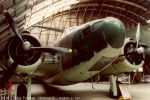
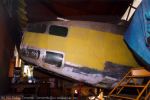
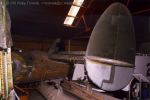
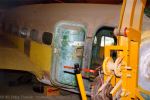

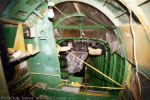
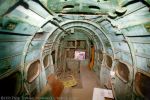
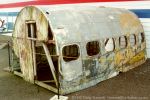
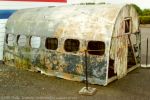
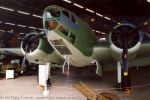

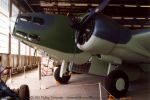
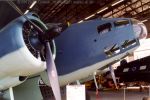

 © 1997-99 Phillip Treweek, all rights reserved
© 1997-99 Phillip Treweek, all rights reserved